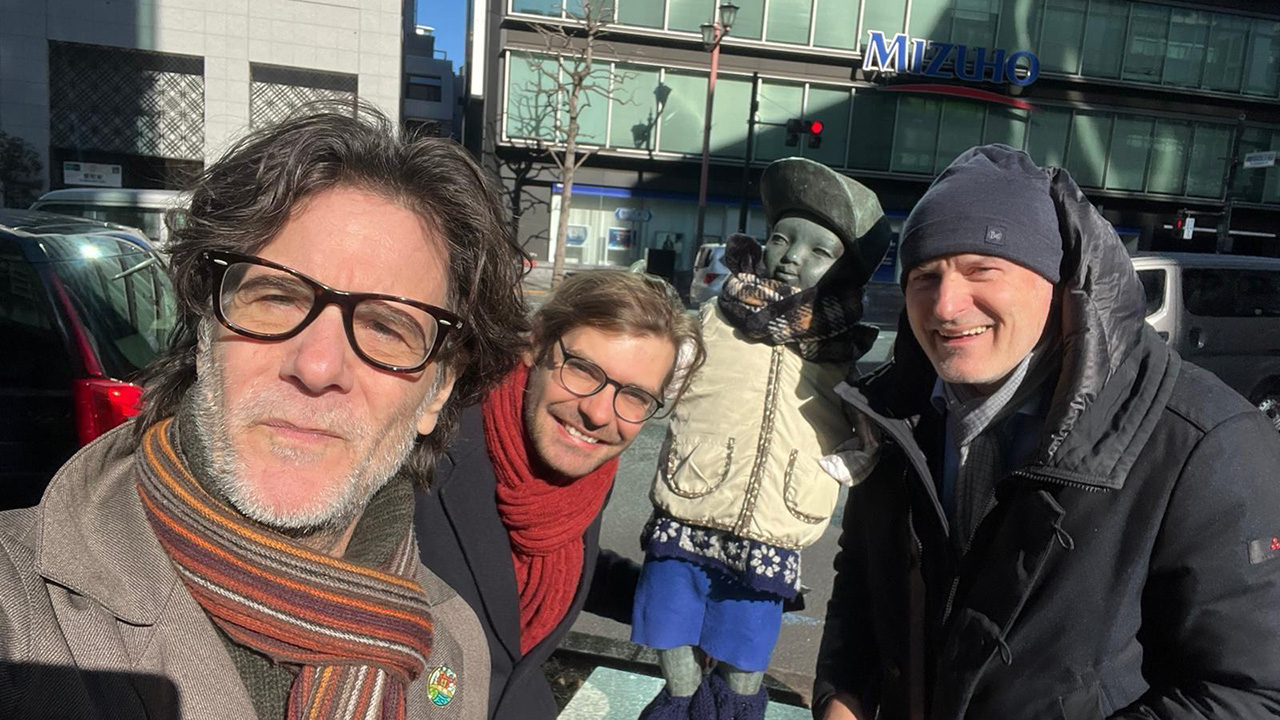STEFAN BÖSCHEN, MASAHIKO HARA, PETER MANTELLO AND ALIN OLTEANU
The Käte Hamburger Kolleg: Cultures of Research (c:o/re) is a partner on the project Emotional AI in the Japanese and German Workplace: Exploring Cultural Diversity in AI Ethics, led by Professor Peter Mantello of Ritsumeikan Asia Pacific University (APU) and funded by the Japan Society for the Promotion of Science. The project has been ongoing for about a year, and in January 2025, c:o/re director Stefan Böschen and Alin Olteanu visited Professor Mantello and conducted a first field study in Japan for this project.
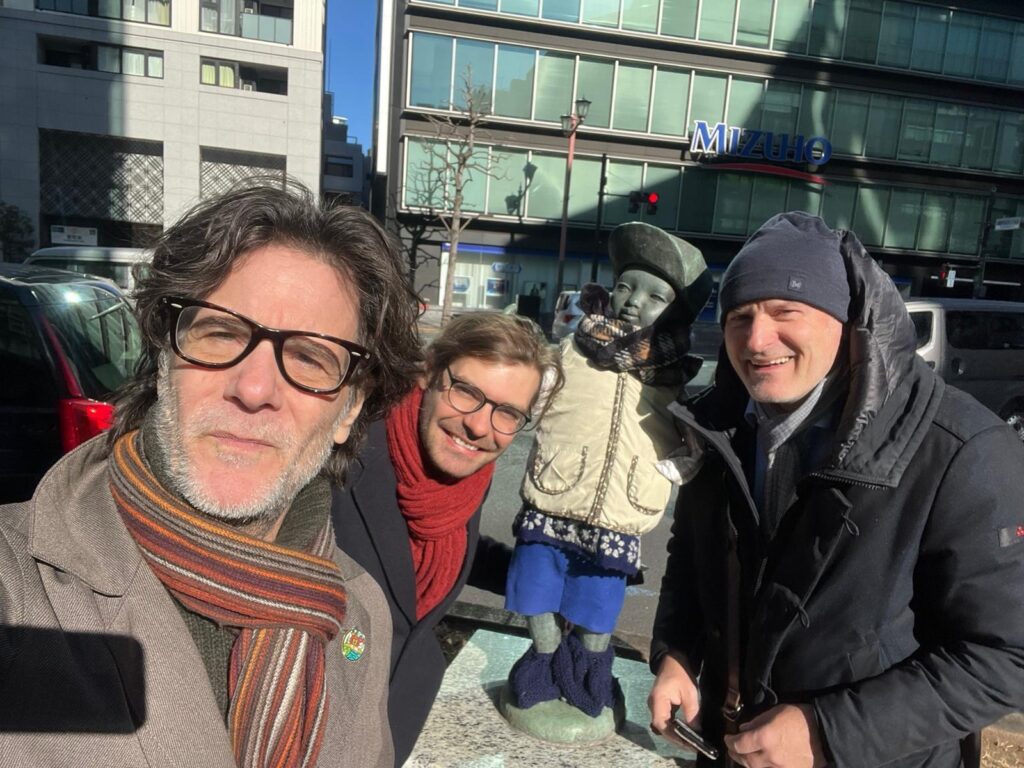
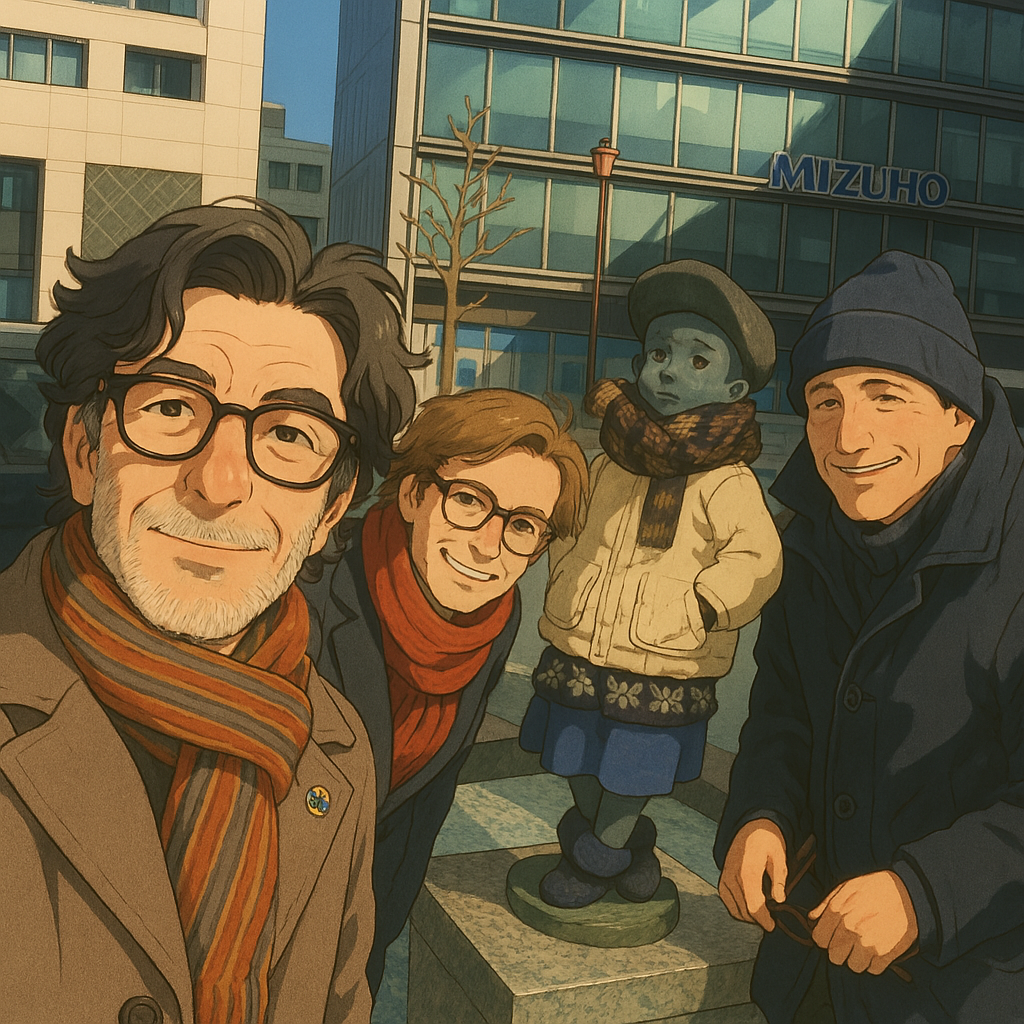
As the title claims, this project examines the developments in Emotional AI from a comparative perspective between Japan and Germany. Such research is, of course, conducted in the context of increasingly rapid developments in the field of artificial intelligence (AI). So far, these developments have occurred in waves. Phases of great innovative momentum alternated with phases in which this topic appeared dormant. The recent technological platform of large language models such as ChatGPT suggests that this field is now entering a phase of lasting and disruptive development. The great geopolitical competition between world regions is exemplified in the sudden appearance of China’s DeepSeek. These developments raise questions about the specific technological development under the respective cultural-institutional framework conditions. With its AI Act, the European Union has issued the strictest, risk-based regulation of AI, striking a balance between protection against technology and industrial development, while the United States and Japan appear, at least at the present moment, reluctant to lay down a concrete regulatory policy, preferring instead a market state approach.
Our project offers the opportunity to reflect not only on the specific challenges for science studies, but importantly, in the context of the increasingly quantified workplace, where insights can be fed into the varieties of science discussions pioneered at c:o/re. The following itinerary documents the journey of c:o/re director Stefan Böschen and former team member Alin Olteanu through Japan, together with Principal Investigator Peter Mantello, along with Co-Investigator Hiroshi Miyashita of Chuo University, and the local assistance of Masahiko Hara, an alumni fellow of c:o/re who graciously gave us his time to accompany us from Tokyo to Beppu. The following blog post outlines some of the places and people we met along the way, as well as revealing insights we achieved on this whirlwind one week journey.
Tokyo, Monday, January 13th – AI Workshop
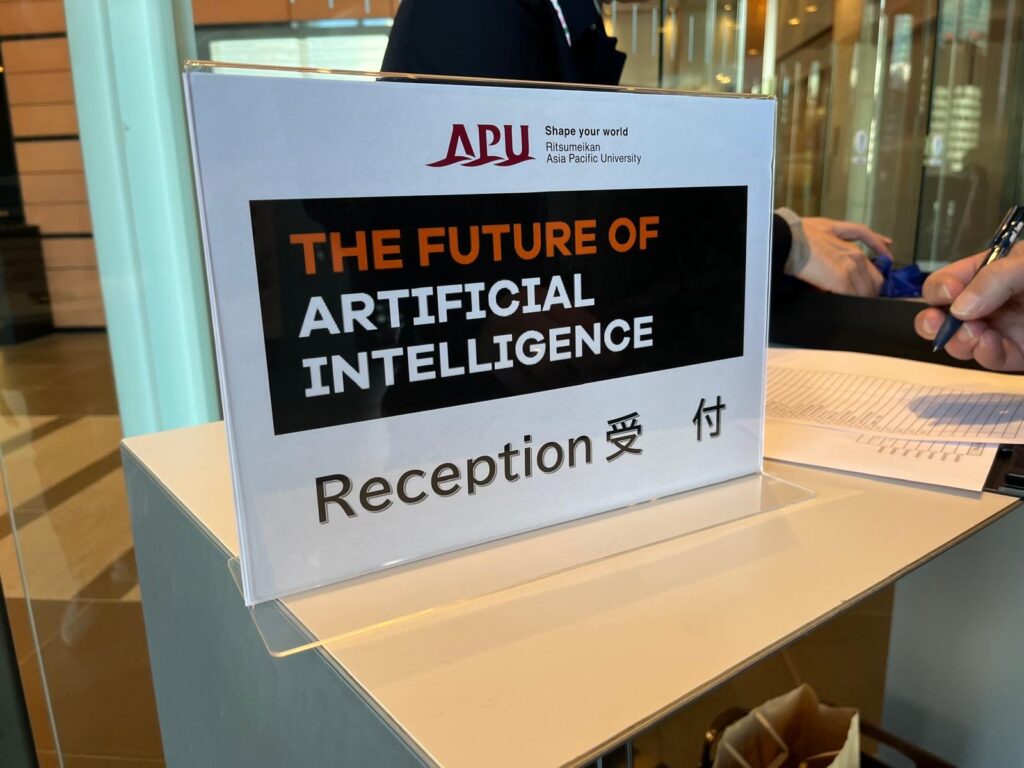
On the 13th of January, a workshop on the Future of AI was held at Ritsumeikan University’s Tokyo Campus at Sapia Tower. Bringing together stakeholders from the private sector, academia, and non-governmental organizations, the workshop explored various risks and opportunities of AI development in Japan. Some of the speakers included researcher Nicole Müller from the German Institute for Japanese Studies (DIJ), who spoke about the implications of Emotional AI and Extended Reality, Imam Habib, managing director of Menlo Park, a venture capital firm, who described the regulatory challenges facing AI start-ups in the field of healthcare, Professor Hiroshi Miyashita, speaking as a data privacy expert who examined emerging legal issues surrounding the nascent but rapidly growing field of neurotechnology and Dennis Tesolat, a spokesman for General Union, Japan’s largest labor advocacy group, who spoke about the increasing employer-employee conflicts due to the adoption of AI management systems by a growing number of Japanese companies.

Tokyo, Tuesday, January 14th – German Institute for Japanese Studies and TeamLabs
In the morning of the 14th of January, we visited the German Institute for Japanese Studies (DIJ) and held discussions with the Deputy Director of Sociology, Barbara Holhus, exploring the possibility of various short and longer-term collaboration avenues between DIJ, c:o/re and other Japanese universities. Having identified various research avenues of common interest, we agreed to meet regularly in the future. The trio of DIJ-c:o/re-APU brings a set of complementary competences to collaborate on the comparative study of research cultures and their technological evolution.
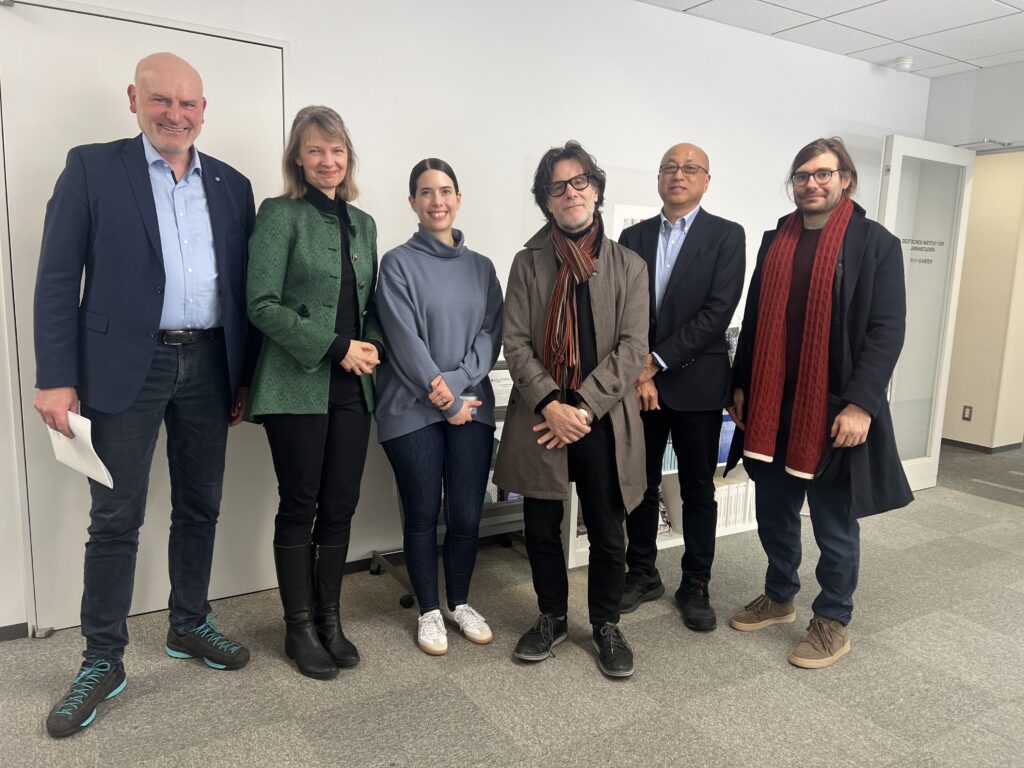
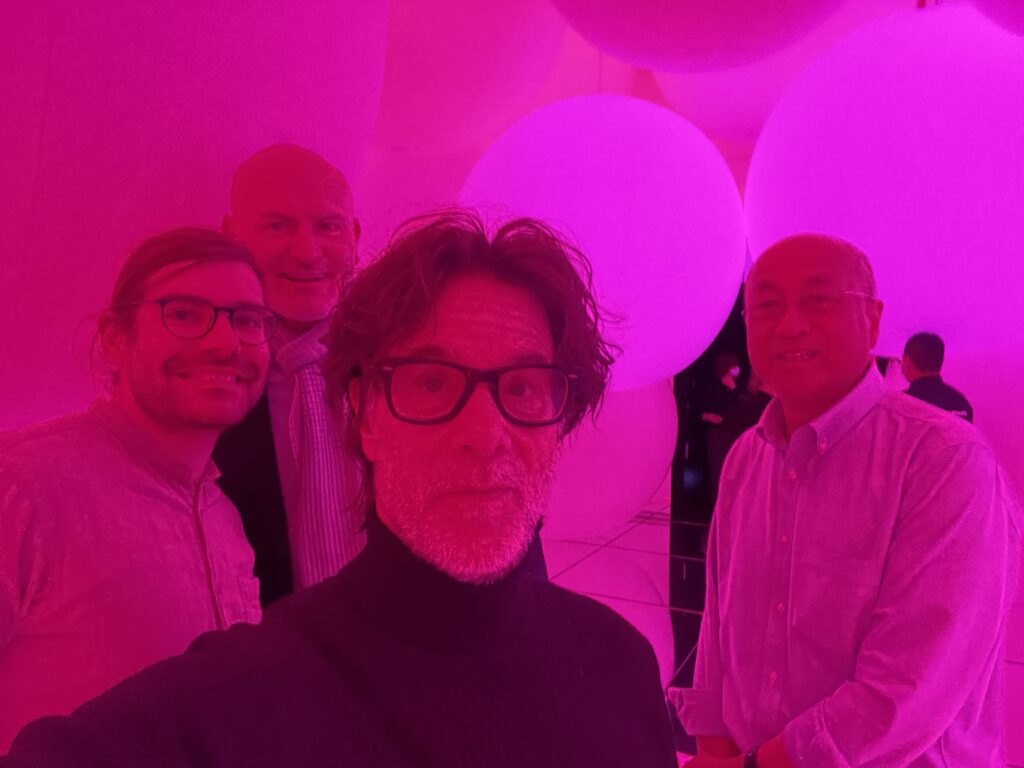
Later that day, before catching Japan’s famous Shinkansen highspeed train to our next destination, Kyoto, we took the opportunity of a mid-day hiatus to visit TeamLab Planets, an interactive museum providing customized AI-powered art experiences. Utilizing state-of-the-art technology, TeamLab Planets offers visitors seven different types of multi-sensory, fully immersive artistic environments. Not only did we all find this immersive experience very relaxing, we also noted how inspiring and motivating it can be, especially for the science and technology scholars.
Kyoto, Wednesday, January 15th – Kyoto University’s Disaster Prevention Research Institute and School of Informatics
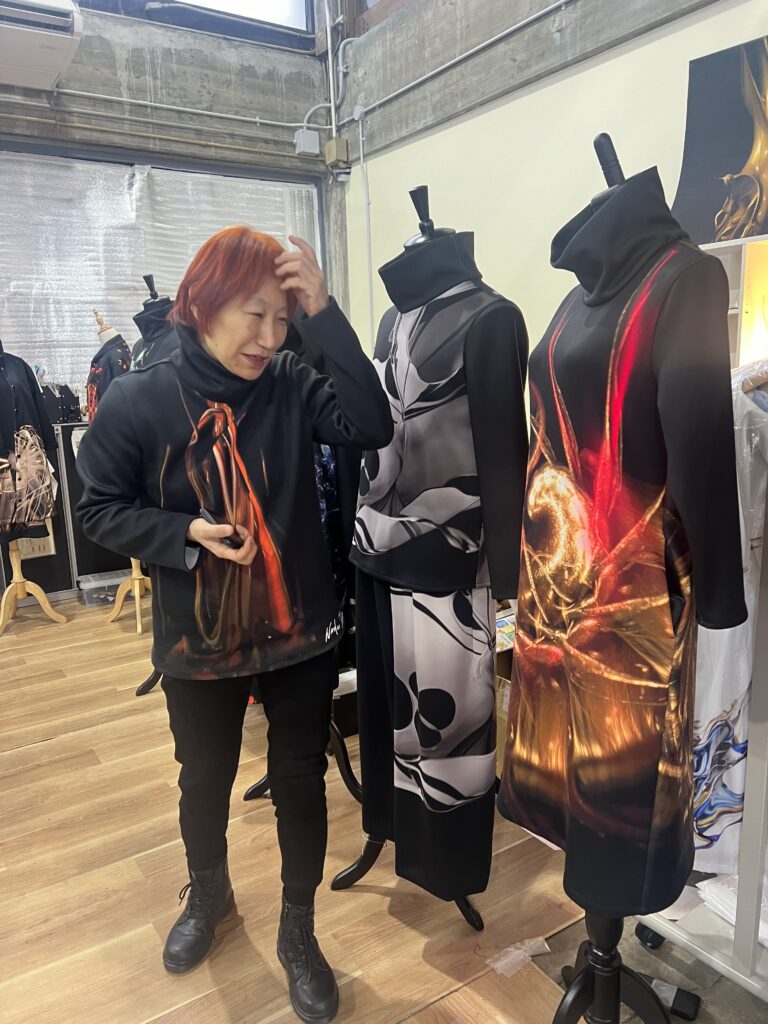
On the 15th of January, we ventured to Kyoto University to meet researchers at the Disaster Prevention Research Institute (DPRI). Here we learned from various faculty members of the institute about the latest of current research developments in natural hazard reduction and integrated strategies utilizing the latest modeling software for disaster loss reduction. We were certainly surprised at the institute’s multidisciplinary embrace of artistic interventions in this regard, as a presentation by Naoko Tosa, a resident artist at DPRI, described her fascinating and thought-provoking designs in clothing fabric which weave digital sensors and actuators that are activated by cellular emergency warnings. Afterwards, we were invited to visit her studio, where we had a chance to get a closer look at the technical and conceptual aspects of her creative process in designing ‘disaster couture’.
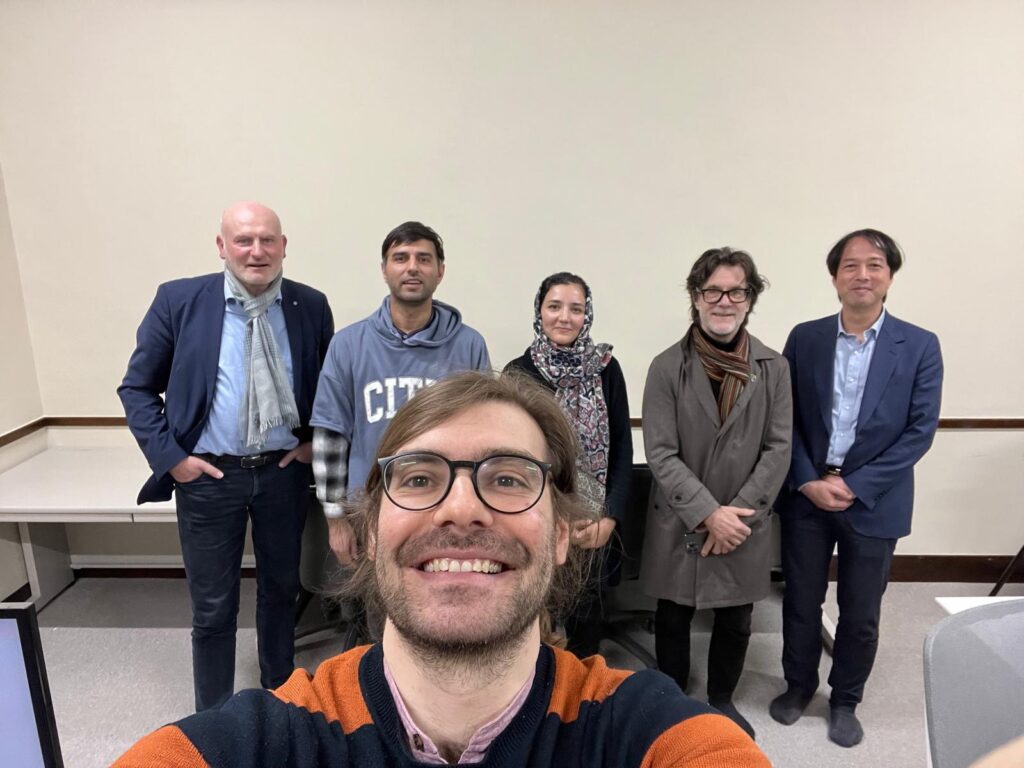
The day concluded with a visit to the Department of Informatics at Kyoto University, where we met Professor Jaward Haqbeen, an Afghan AI researcher whose work focuses on the use of generative AI in language acquisition in developing countries such as Afghanistan and Nepal. We have discussed plans for future collaboration, particularly on matters of education, language learning and technological literacies.
Osaka, Thursday, January 16th – NTT’s Brain Lab Osaka University

On Thursday, we headed to Osaka to visit one of Japan’s leading research centers for brain science, NTT’s Human Information Science Laboratory (HISF) at Osaka University. Employing a multidisciplinary approach to neuroscience, HISF brings together some of the nation’s top scientists from the fields of information science, psychology, and neuroscience. Utilizing cutting-edge technologies, HISF researchers study the mechanisms underlying human perception, cognition, emotion, and movement with a current focus on understanding how environmental and social information is processed in the human body and brain. These findings are expected to serve as basis for future information technologies that are conceptually new and user-friendly. During their presentation, we learned about technology development in a surprising way, especially about the “Yuragi-Group”. This group originally develops AI according to the unique cultural principle of Yuragi, which not only enables new technical options, but also allows specific value judgments to be realized (the topic of transparency of AI). They have arrived at a unique form of AI programming that differs from deep learning programs in relevant parameters. In this way, an element of transparency has been built into the AI, as the map of affordances (this is, so to speak, the cognitive system of the AI; our formulation) can be transferred to the next system in each case. It relies on a cultural repertoire and the formation of epistemic heuristics.
Beppu, Friday, January 17th – Ritsumeikan Asia Pacific University
On Friday the 17th, the team along with Professor Masahiko Hara (Institute of Science, Tokyo) gave talks at Professor Mantello’s home institution, Ritsumeikan Asia Pacific University in Beppu, located on the east coast of Kyushu Island in the south of Japan. Targeting a primarily undergraduate audience, Stefan Böschen gave an informative lecture on the importance of science and technology studies. Alin Olteanu engaged students with a talk on the semiotics of Digital Nomadism and Masahiko Hara on his experimental artistic interventions into intelligent interfaces that read human emotions.
Outlook
Like most countries, Japan and Germany share fundamental values such as freedom, democracy, and the rule of law. They also agree that accountability, transparency, human rights and privacy should be built into AI. Yet where the EU/Germany wants a top-down government-led approach to mitigate AI harms, Japan (at least at the moment) prefers an industry/sector approach to give the technology a good chance to grow. At the government level, the annual Japan/Germany ICT Policy dialog forum promotes the need for common rules on AI. Importantly, Japanese labor law is influenced by the German legal contexts. But while German law on AI in the workplace is becoming increasingly precise and restrictive, current Japanese law is vague and ambiguous. Thus, it is important to refer to the development of both EU and German law for comparisons of Emotional AI in the workplace. As Co-Investigator Hiroshi Miyashita argues, “Japan is well-known for importing foreign laws, but a patchwork of copy/paste does not work well in a Japan”.
Concomitantly, our collaborative efforts to date suggest that Japan could offer a third way by heuristically exploring the space of AI development that seeks to create harmonious human-machine relationships, with a focus on AI that preserves human dignity. Keeping this in mind, the journey goes on, and we look forward to further opportunities to collaborate with the project of Professor Mantello, as well as with the DIJ and other stakeholders from both the private and public sector. It is interesting to note that the Japanese government is fueling the evolutionary dynamic in the field by creating far-reaching exchange opportunities for incoming researchers.
Photo Credits: Peter Mantello

